ServiceNow and Tableau Integrations Explained
- ServiceNow is a leading cloud-based platform widely used for IT Service Management (ITSM), operations, and enterprise workflow automation. It helps organizations streamline incident management, change requests, asset tracking, and more.
- Tableau is a robust data analytics and visualization platform that allows users to create dynamic dashboards and gain insights from large volumes of data without deep technical knowledge.
Integrating ServiceNow and Tableau allows organizations to reach beyond basic reporting capabilities and leverage Tableau’s advanced analytical features for deeper insight into IT and business operations.
It also enhances data availability by making ServiceNow data accessible through a solution with a lower cost per user, eliminating the need to purchase additional ServiceNow licenses for data teams working across departments and platforms.
This means key ITSM KPIs and metrics such as incident trends, SLA compliance, backlog aging, and change management success rates become instantly accessible, without needing to directly access ServiceNow.
Tableau’s intuitive drag-and-drop interface, along with customizable filters and calculated fields, allows for deep exploration of ServiceNow data. This means you can analyze specific incidents or detect patterns over time with ease.
Additionally, you can blend ServiceNow data with other enterprise systems like CRM, ERP, HR, and financial tools. This integration offers stakeholders a unified, comprehensive view of business operations, leading to better alignment and informed decision-making.
Whether the goal is to reduce resolution time, improve SLA adherence, or align IT with broader business objectives, integrating ServiceNow with Tableau provides centralized access to data and insights—enabling faster, more informed, and strategic decision-making.
Connect ServiceNow to Your Enterprise
Integrate ServiceNow with the rest of your enterprise and replicate over 40 million records every day
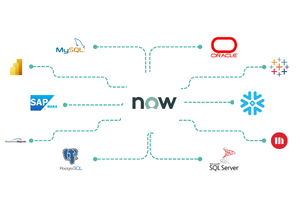
Connect ServiceNow to Your Enterprise

Integrate ServiceNow with the rest of your enterprise and replicate over 40 million records every day.
Benefits of Integrating ServiceNow and Tableau
While ServiceNow is a top choice for IT service management (ITSM), operations, and workflow automation, it falls short when it comes to advanced reporting and analytics, interactive dashboards, and cross-system reporting.
By integrating ServiceNow with Tableau, especially with solutions like Perspectium, organizations unlock a variety of operational, strategic, and technical benefits:
1. Enhanced Analytics & Visualization
Interactive Dashboards & Advanced Reporting
Tableau empowers organizations to create interactive, real-time dashboards that far exceed ServiceNow’s native reporting capabilities. Integrating ServiceNow data into Tableau allows you to:
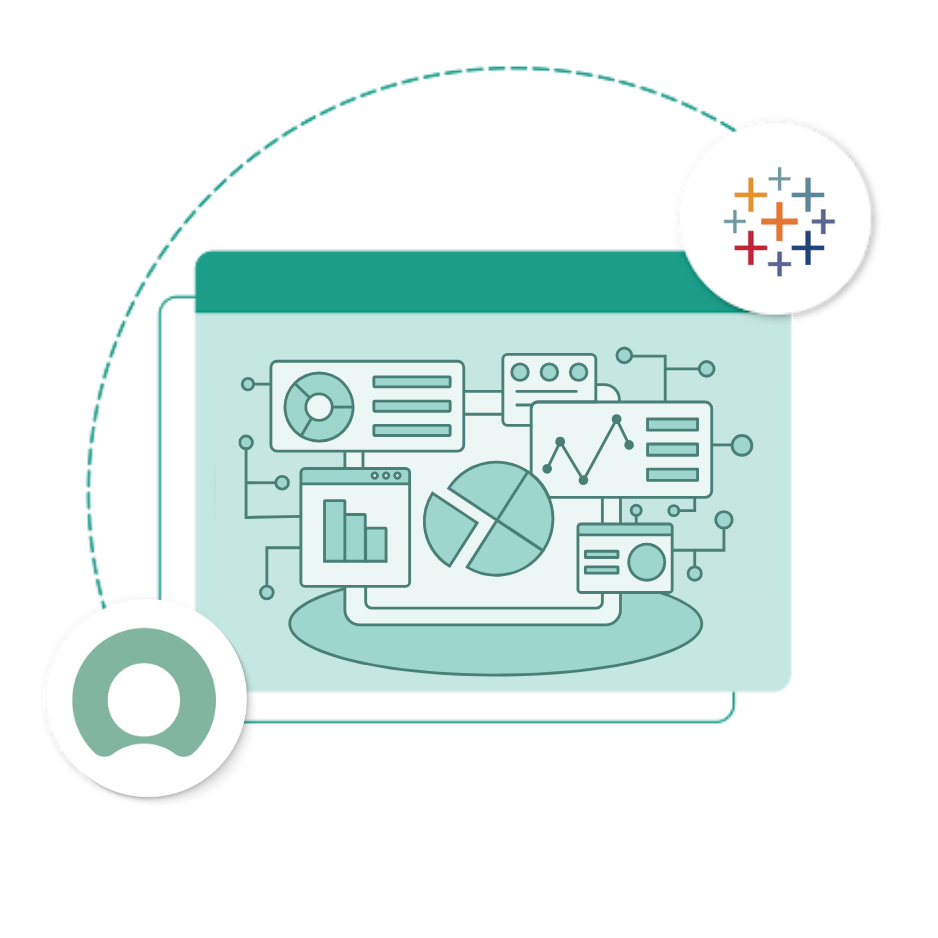
- Build detailed, drillable dashboards with filters and customizable parameters.
- Create KPI views aligned with business objectives and department goals.
- Design executive-level reports, trend charts, heatmaps, and scorecards that visualize key IT metrics.
- Use Tableau’s Story Points to build compelling narratives that link IT performance with business outcomes.
Advanced Analysis & Predictive Analytics
Tableau’s rich features like calculated fields, trend lines, and forecasting models provide deeper insights into your data:
- Predict trends in incident volume or resolution times using forecasting models.
- Identify anomalies in SLA compliance and operational patterns.
- Model staffing requirements based on historical data and trends.
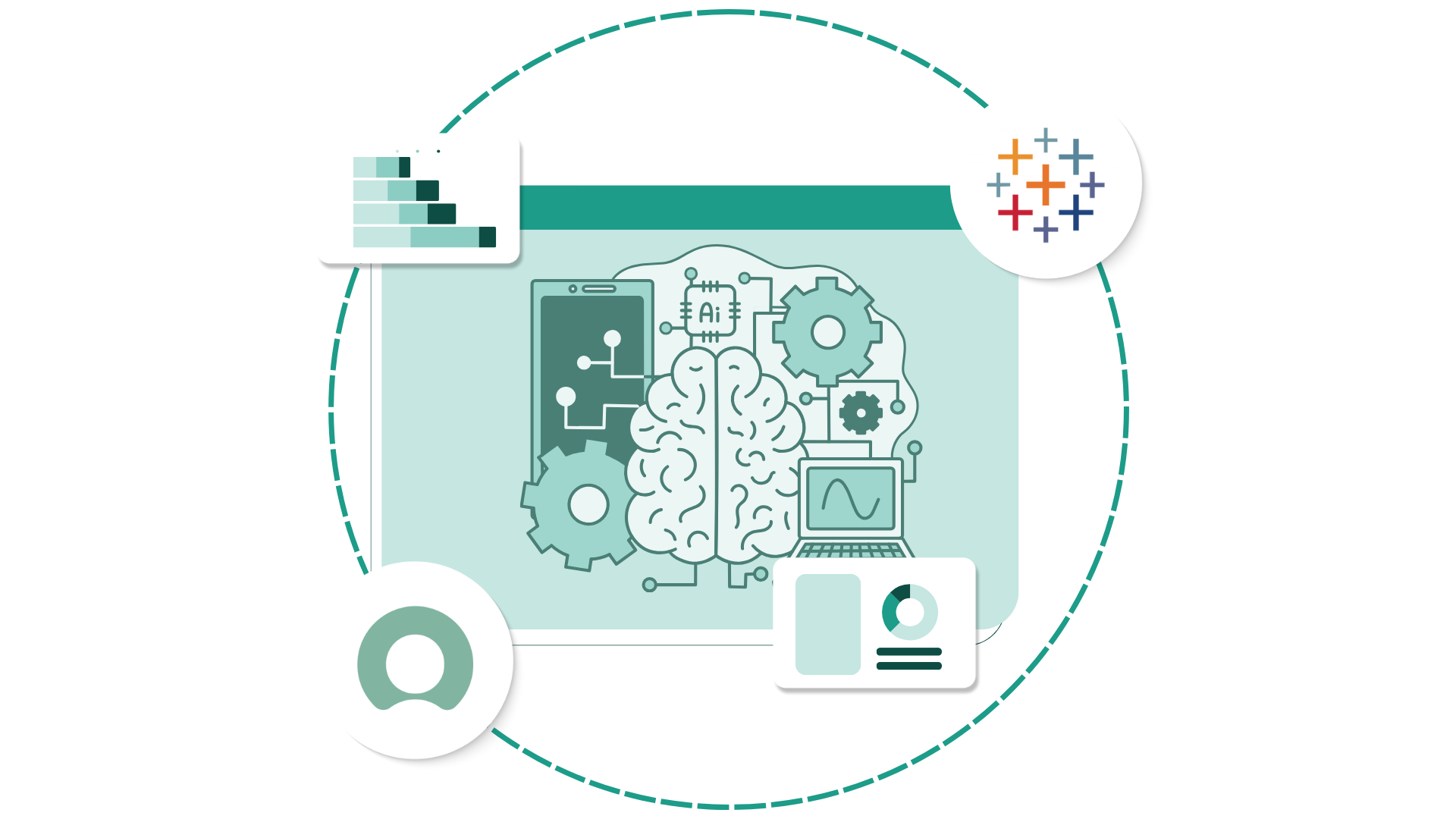
2. Cross-Platform Data Integration
Combine ServiceNow Data with Data from Other Enterprise Sources
With Tableau’s native support for data blending and relationships, you can join ServiceNow data with data from other enterprise sources. This enables:
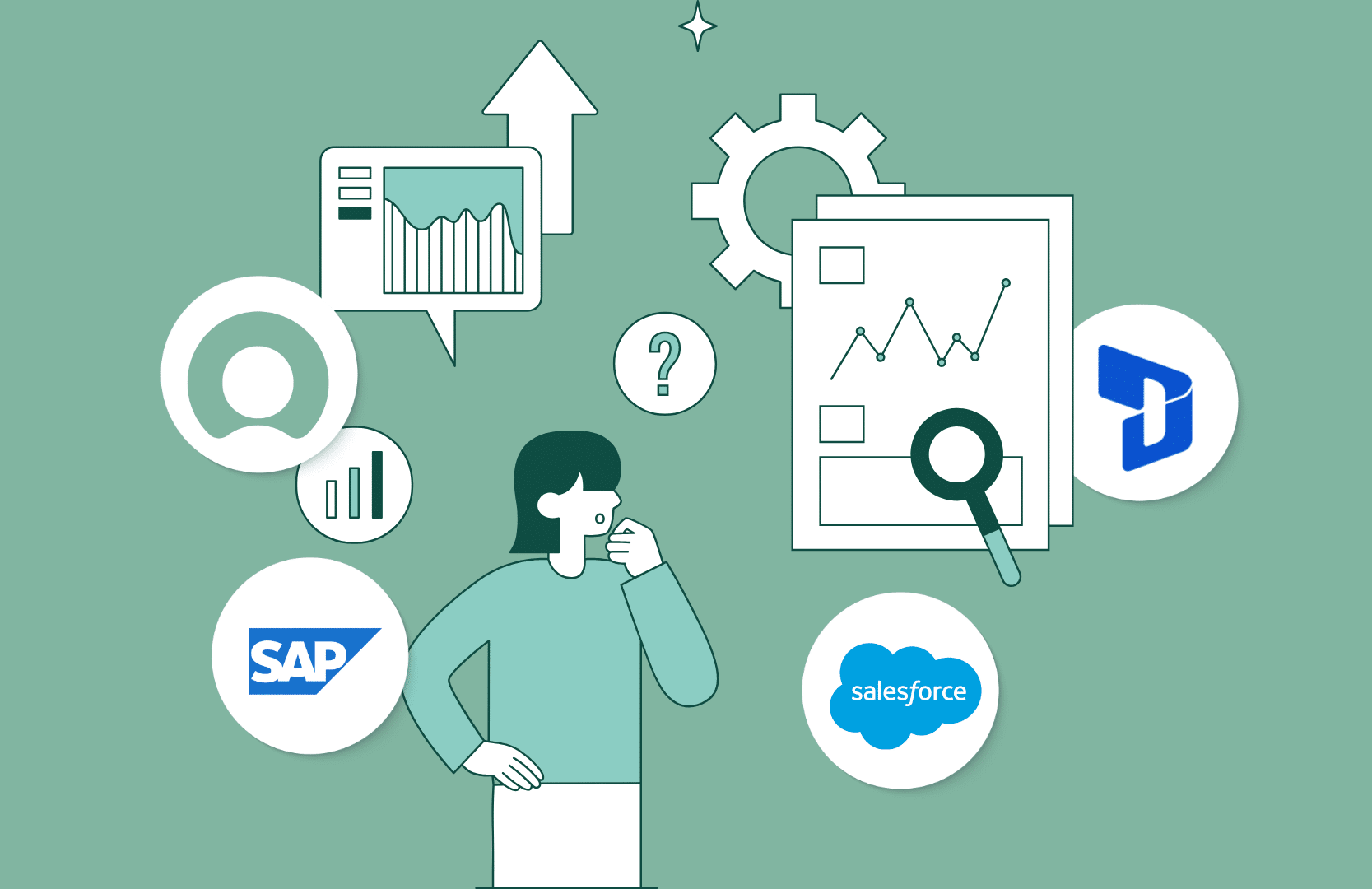
- A 360-degree view of IT operations and their business impact
- Dashboards that cover entire workflows (e.g., from service request to financial resolution)
- Insightful reporting that drives strategy and accountability
3. Performance Optimization
Offload Reporting Requirements and Improve ServiceNow Performance
Running complex reports inside ServiceNow can affect system performance. By offloading analytics tasks to Tableau, you can:
- Keep ServiceNow optimized for its core tasks, such as ticketing and workflow management.
- Reduce reliance on scheduled reporting jobs and large data exports.
- Enable faster, more frequent reporting without impacting ServiceNow’s responsiveness.
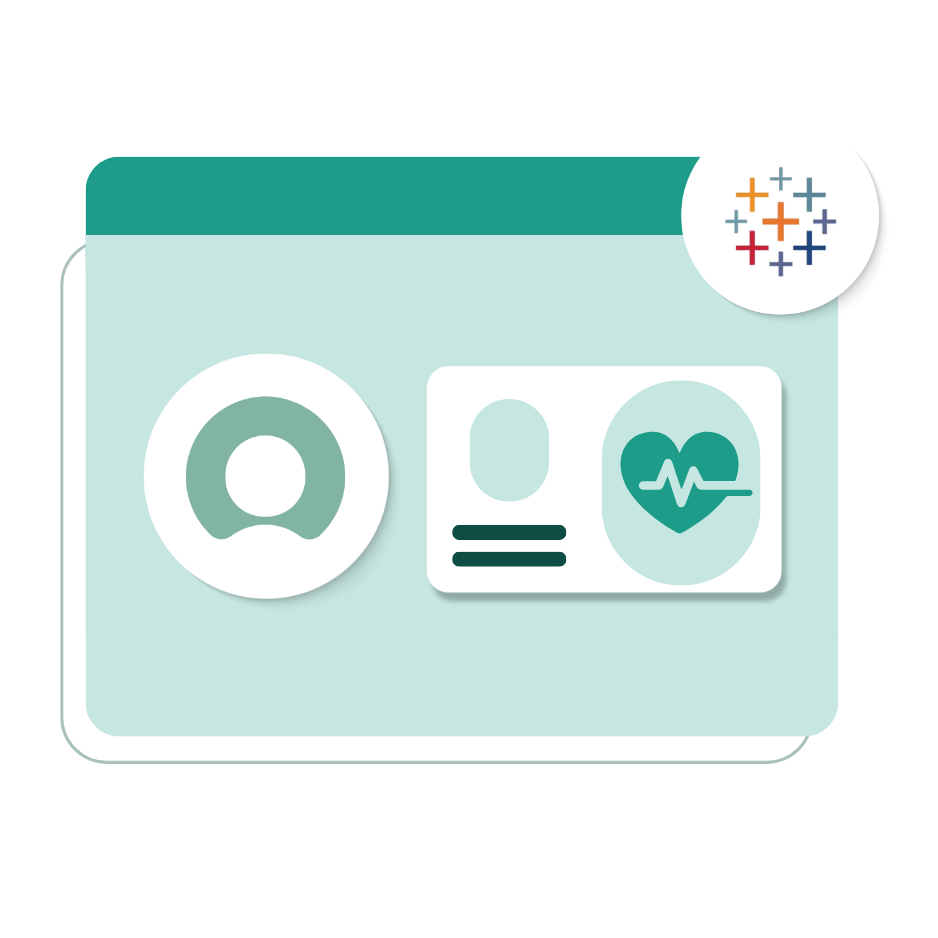
4. Scalability & Flexibility
Connect Tableau to External Repositories and Work With Data At Scale
Tableau is a scalable solution that can connect to, and ingest large datasets from a number of supported data repositories, making it ideal for enterprise-grade analytics:
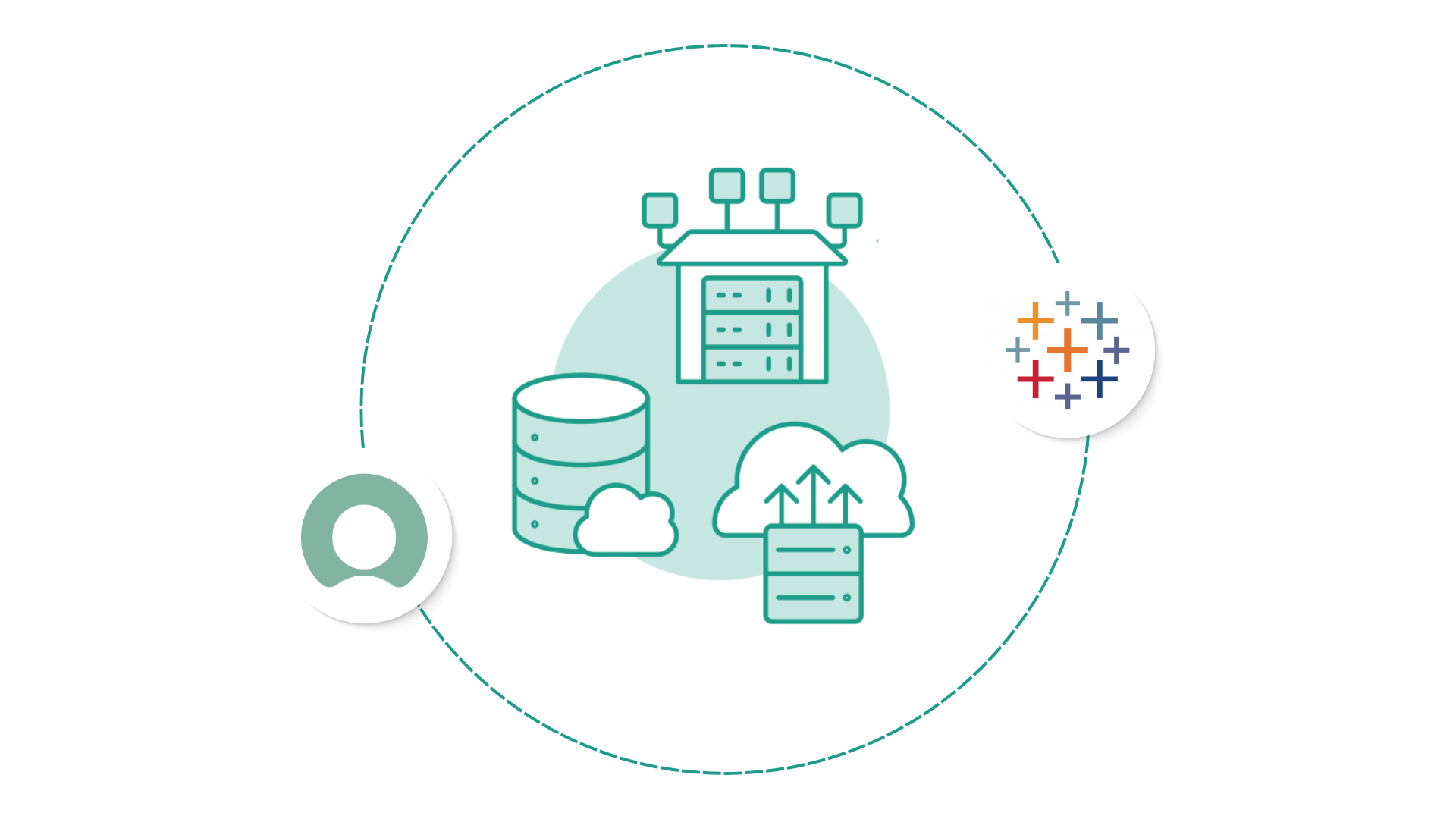
- Handle millions of records per day with no performance degradation.
- Set up automated data refreshes to ensure near real-time reporting.
- Perform deep historical analysis and trend comparisons using pre-aggregated data snapshots.
5. Collaboration & Distribution
Enable Improved Access to ServiceNow Data and Insight Without Additional ServiceNow Licenses
Working with ServiceNow data in Tableau allows for better access to data and collaboration on report creation and analysis:
- Share dashboards via Tableau Server, Tableau Cloud, or embedded in custom portals.
- Grant stakeholders access to data without requiring a ServiceNow license.
- Provide mobile access and enable integration with platforms like Slack or Teams for alerts and notifications.
- Promote self-service analytics across teams while maintaining secure, role-based data access.
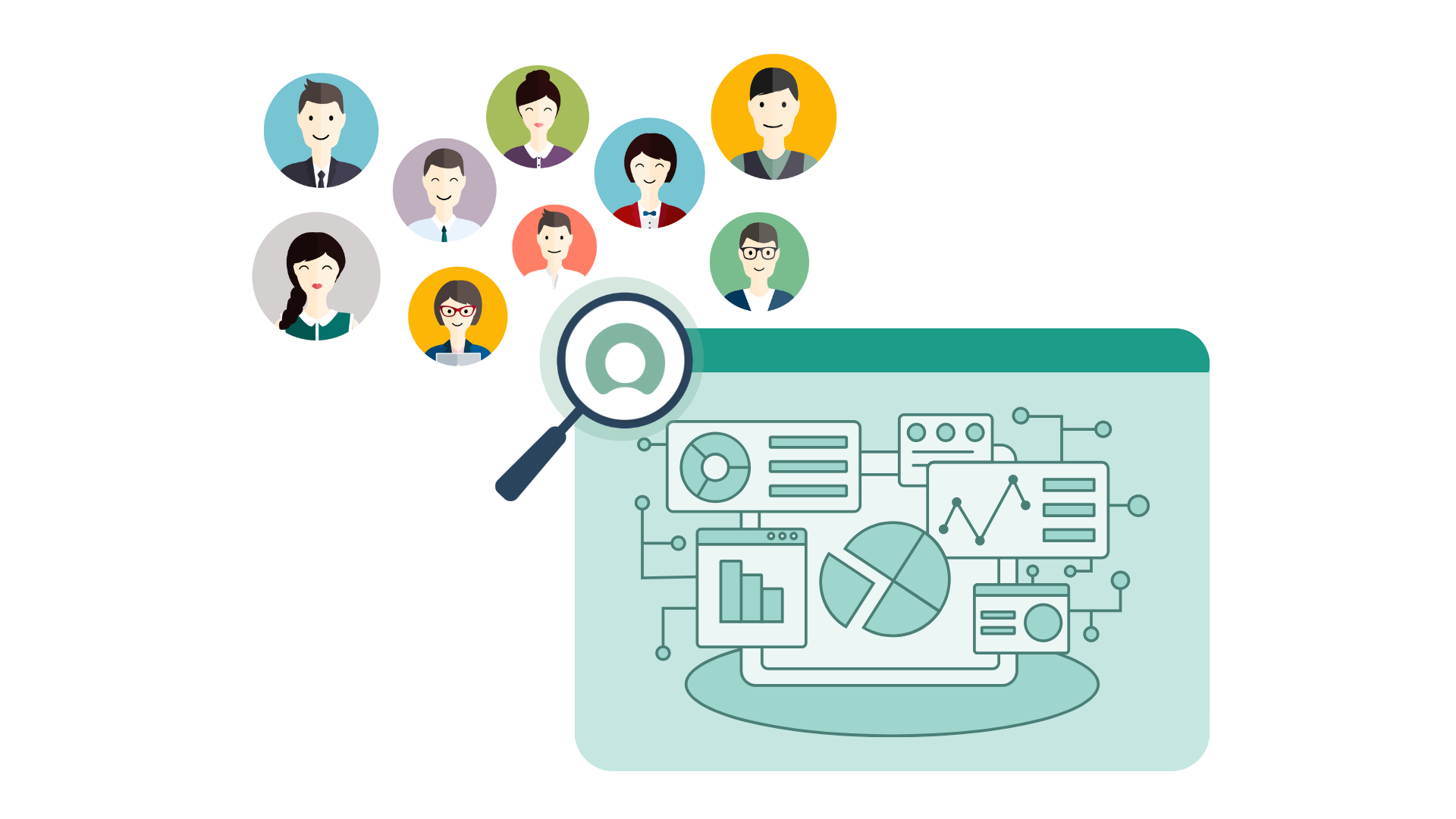
7. Optimize Storage and Reduce Costs
Reduce the Volume of Data Stored In ServiceNow and Avoid Additional Fees
By offloading analytics to Tableau, organizations can:

- Reduce the storage burden within ServiceNow, preventing unnecessary costs.
- Streamline ServiceNow’s performance, ensuring that it remains responsive to day-to-day operations.
- Retain long-term historical ServiceNow data in more cost-efficient storage solutions.
Integrating ServiceNow with Tableau provides an optimized, scalable solution for IT and business teams, helping organizations make smarter, faster, and more data-driven decisions across the enterprise.
The Perspectium ServiceNow and Tableau Connector
Perspectium’s DataSync is an enterprise-scale, high-throughput solution for integrating ServiceNow data with Tableau and other platforms—without taxing ServiceNow resources.
Unlike generic ServiceNow connectors, it’s purpose-built to support high-volume data replication (40M+ records per day) with end-to-end data integrity.
Delivered as a service, Perspectium offers a no-code, configuration-only solution that enables business and technical users to manage data transfers directly within the ServiceNow interface.
With a high-throughput ServiceNow to Tableau integration, users can:
- Improve ServiceNow performance by offloading reporting to purpose-built solutions, conserving system resources
- Populate Tableau dashboards with ServiceNow data in real-time to analyze ITSM performance
- Combine ServiceNow data with other enterprise sources for cross-functional insight and analysis
- Extend access to ServiceNow data and its insight to teams across the enterprise
Perspectium ensures high throughput, schema-aware replication, and end-to-end data integrity, making it a great option for enterprises that want to extract more value from ServiceNow and its data.
ServiceNow itself uses Perspectium to replicate its own internal ServiceNow data for reporting - Learn More.
Keep scrolling to learn more about integrating ServiceNow with Tableau or use the navigation links in the contents menu.
When to Connect ServiceNow to Tableau
Integrating ServiceNow with Tableau is a game changer when you want to shift from basic reporting to advanced, real-time, interactive dashboards that provide deeper insights into IT service performance.
Use Cases Enabled by ServiceNow-to-Tableau Integration
If your team would benefit from any of the following use cases, it’s the right time to connect ServiceNow with Tableau:
Challenges Addressed by ServiceNow-to-Tableau Integration
If you face any of the following ServiceNow reporting limitations, it’s time to connect it to Tableau:
Integrating ServiceNow with Tableau shifts your organization from reactive reporting to a proactive, data-driven approach, enabling more efficient and informed decision-making across IT and business teams.
Why Standard ServiceNow to Tableau Connectors Are Limited
While it may be tempting to use generic ETL tools or write API scripts to get ServiceNow data into Tableau, these approaches fall short for enterprise-scale use. They weren't designed to replicate ServiceNow data at the volumes and frequency that large organizations require today.
1. Throughput Bottlenecks
Standard connectors often rely on API calls or batch ETL pipelines to extract data. This creates serious limitations when trying to work with high volumes of ServiceNow records.
- ServiceNow’s APIs aren’t designed to handle the export of tens of millions of rows per day.
- Traditional ETL jobs introduce latency due to scheduled runs, staging layers, and transformation steps.
- When data extraction is slow or inconsistent, near real-time Tableau dashboard refreshes become unreliable or impossible.
These methods often lead to failed syncs, stale data, and outdated information in Tableau dashboards.
2. Scalability Constraints
Traditional connectors assume a one-source-to-one-target model. But in most enterprises:
- ServiceNow data is needed across multiple teams, and in multiple solutions.
- Running multiple APIs in parallel can strain system resources and degrade overall ServiceNow performance.
- Adding new use cases requires replicating the same pipeline, increasing overhead and introducing new systems to maintain.
This dynamic quickly results in poorer ServiceNow performance, technical debt, and governance headaches.
3. Scalability Constraints
Web service connectors and ad-hoc ETL processes pull data directly from ServiceNow tables. This creates:
- Query contention that slows down the platform for live users.
- Resource exhaustion during batch jobs, especially if filters aren’t optimized.
- Increased support burden from frontline teams when the platform becomes unstable.
To prevent overloading ServiceNow, you need a solution that minimizes query frequency and maximizes transaction efficiency.
Perspectium’s publish-and-subscribe model achieves this by establishing a single connection between ServiceNow and an external data repository.
Downstream systems then subscribe to that repository—allowing multiple consumers to access ServiceNow data simultaneously, without placing additional load on the ServiceNow platform.
4. Security and Data Governance Gaps
Many standard ServiceNow connectors are limited in terms of security:
- Widespread use of APIs makes them frequent targets for cyberattacks.
- Misconfigurations can expose sensitive ITSM data, increasing the risk of unauthorized access.
- Lack of options to mask, filter, or redact data for specific Tableau audiences.
- Standard connectors may lack detailed audit trails tracking what data was moved, when, and by whom.
Robust security features are essential in integration solutions to protect sensitive data, maintain compliance, and ensure trust across all users and systems.
5. Limited Schema Support
ServiceNow environments often feature unique customizations such as extended fields, custom tables, and complex reference relationships.
Standard connectors commonly struggle to support these tailored configurations effectively. As a result, organizations may face:
- Partial data replication and potential data loss.
- Compromised data accuracy, leading to unreliable reports and dashboards.
- The need for costly and complex custom development and schema mapping to address these issues, increasing ongoing maintenance efforts.
With robust schema support and automation, organizations enjoy more complete, accurate data replication with minimal manual effort.
6. Risk of Data Loss During Transfer
Many standard connectors do not provide store-and-forward technology, meaning that interrupted data transfers can lead to data loss:
- Network failures or timeouts can silently drop records.
- Partial loads go unnoticed until someone sees wrong numbers in Tableau.
- Schema changes on the ServiceNow side can result in broken syncs and corrupt dashboards.
Without end-to-end delivery assurance, the integrity of your Tableau environment is always in question.
7. Ongoing Strain on Development Teams
Every manual integration adds maintenance overhead:
- With every ServiceNow upgrade, your pipelines need retesting.
- If key developers leave, undocumented integrations fail.
- Every new Tableau dashboard built on brittle pipelines increases the risk surface.
Over time, these integrations become blockers—not enablers—for agile analytics.
A purpose-built integration like Perspectium solves all of the above. It’s native to ServiceNow, designed for scale, and built to deliver governed, high-throughput data directly into your Tableau-ready storage. That way, you spend less time fixing data problems and more time building dashboards that matter.
Why Connect ServiceNow to Tableau with Perspectium
Integrating ServiceNow with Tableau through Perspectium delivers far more than what standard connectors or API-based ETL tools can provide. It’s a purpose-built, high-throughput solution that replicates over 40 million records per day—amounting to billions per month—without compromising ServiceNow performance.
Unlike traditional approaches, Perspectium is natively installed within ServiceNow and tightly coupled with its architecture. This enables efficient, push-based data transfers initiated directly from ServiceNow, eliminating the delays and performance hits caused by excessive, external API calls.
This architecture enables organizations to confidently deliver fresh, trusted, and richly structured ServiceNow data to Tableau, empowering both technical and business users with reliable insight—while IT maintains control over performance, security, and governance.
With Perspectium, ServiceNow to Tableau integration becomes a strategic asset—turning operational data into a real-time, visual foundation for smarter decisions across the enterprise.
How Perspectium Connects ServiceNow and Tableau
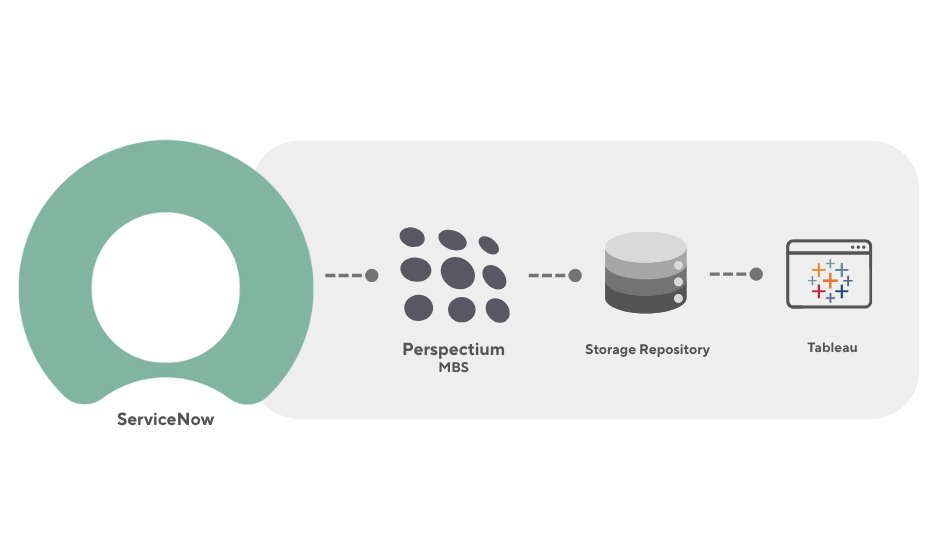
Integrating ServiceNow and Tableau unlocks a lot of opportunities, and Perspectium ensures that this integration is smooth, secure, and efficient.
Here’s how Perspectium connects ServiceNow with Tableau.
1. Native ServiceNow Installation
Perspectium is deployed directly as a native application within ServiceNow, ensuring seamless integration with the platform’s architecture.
Unlike traditional methods, such as API-based integrations or ETL solutions, this allows Perspectium to use an event-driven, push-based approach to extract data. This enables real-time or scheduled data extraction without slowing down ServiceNow, or impacting API rate limits on the platform.
2. Data Replicated via Message Bus (MBS)
After data is extracted, it is securely transmitted to Perspectium’s Message Bus (MBS). The data is encrypted during transit and at rest. The MBS acts as a secure intermediary, buffering and queuing the data to decouple extraction from ingestion.
This ensures that if the target system is temporarily unavailable, no data is lost—it waits safely until the target system is ready to receive the data. It also allows multiple subscribing systems to ingest ServiceNow data with no additional impact on ServiceNow.
3. Data Delivery to a Compatible Storage Target
Once the data is processed by the MBS, it is sent to a compatible storage repository that works with Tableau. Perspectium supports various scalable storage options, including:
-
- Snowflake
- SAP/Hana
- MySQL
- PostgreSQL
- Oracle
- Microsoft SQL Server
- Amazon S3
- Azure SQL / Blob Storage
These storage solutions serve as a centralized data source that is optimized for analytics and capable of handling large-scale data, enabling Tableau to efficiently query and visualize ServiceNow data at scale.
4. Tableau Ingests ServiceNow Data
Once the data is stored in a supported database, Tableau can easily connect to it using native connectors. This allows users to:
-
- Build real-time, interactive dashboards with ServiceNow data.
- Blend ServiceNow data with other enterprise datasets like CRM, ERP, and HR data.
- Analyze ITSM metrics, trends, and KPIs (such as SLA performance, incident volumes, and resolution times) without putting any strain on the ServiceNow platform.
- Build real-time, interactive dashboards with ServiceNow data.
Fully Managed as a Service by Perspectium
Unlike traditional integration tools that require extensive internal development or third-party consulting, Perspectium takes ownership of implementation, ensuring a seamless, scalable connection purpose-built for Tableau dashboards and visualizations.
Perspectium delivers ServiceNow-to-Tableau integration as a service, handling everything from the connection between ServiceNow and the MBS, and from the MBS to the subscribing target solution(s).
Ongoing Monitoring and Maintenance
After deployment, Perspectium actively monitors and maintains the MBS infrastructure to ensure high availability, resilience, and consistent performance—even if internal resources at the customer’s organization change. This eliminates common points of failure, such as staff turnover or configuration drift.
Security and Data Ownership
Customers retain complete control over their data pipeline configurations, including scheduling, field selection, and filtering.
Encryption keys are exclusively owned and managed by the customer—Perspectium has no visibility into the data itself. All transfers occur over secure, encrypted channels and comply with enterprise-grade governance standards.
Always-On Support
Around-the-clock support is included by default. Whether you're troubleshooting a pipeline issue or planning an expansion, Perspectium’s 24/7/365 support team is ready to assist—minimizing downtime and maximizing value.
Perspectium for ServiceNow to Tableau Integration: Key Benefits
By choosing Perspectium for your ServiceNow to Tableau integration, you ensure that your organization has a scalable, secure, and reliable data replication solution. This enables your Tableau dashboards to always be powered by accurate, up-to-date ServiceNow data, helping you make informed, data-driven decisions and elevating your IT service management capabilities.
Use Cases for Connecting ServiceNow to Tableau with Perspectium
Integrating ServiceNow with Tableau via Perspectium transforms your ITSM data into powerful, real-time visual insights. With high-throughput data replication that doesn't impact ServiceNow’s performance, Perspectium ensures seamless data flow into Tableau, where it can be used to create actionable business intelligence without needing complex coding or manual exports. Here are some of the most impactful use cases:
1. Centralize Data for a Unified Business View
ServiceNow doesn’t operate in isolation—your organization uses multiple systems like CRM, ERP, and HR management platforms. Perspectium allows you to merge ServiceNow data with data from other platforms such as Salesforce, SAP, Oracle, Jira, and even Excel. This integration enables:
- Cross-functional insights, combining IT service metrics with customer, financial, or HR data.
- End-to-end process tracking, from service request to cost resolution.
- Tableau’s powerful data blending and relationship features, offering a comprehensive view of organizational performance.
2. Visualize ServiceNow Data to Drive Better Business Outcomes
Perspectium ensures that ServiceNow data is always up to date and available in Tableau, allowing your teams to create dynamic, interactive dashboards that reflect real-time data. This makes it easier to:
- Monitor incident trends, SLA compliance, and problem resolution.
- Track KPIs such as resolution times and change success rates across teams.
- Quickly spot anomalies and performance issues through visual cues like thresholds or conditional formatting.
- Create tailored dashboards for executives, managers, or frontline teams to track key metrics.
3. Enable Real-Time, Automated Data Replication
Perspectium automates the replication of ServiceNow data into Tableau, ensuring that your dashboards are always up-to-date without requiring manual intervention. You can:
- Act on fresh data with near-zero lag, enabling faster decision-making.
- Support real-time dashboards with live filters, calculated fields, and dynamic visualizations.
- Make data-driven decisions faster by having continuously updated insights, removing manual reporting delays.
4. Bridge the Gap Between IT and Business Users
With Perspectium, Tableau users do not need direct access to ServiceNow. Data is replicated outside of ServiceNow, enabling:
- Self-service reporting for non-technical teams, letting them explore and visualize ITSM data without requiring additional ServiceNow licenses, unsecure login-sharing, or developer assistance.
- Less reliance on IT for custom reports or data extraction, enabling business users to generate their own insights.
- Broader access to ITSM metrics through Tableau Server or Tableau Cloud, empowering teams across departments to collaborate more effectively.
5. Track ITSM KPIs and Align with Business Objectives
ITSM KPIs in ServiceNow—such as MTTR, change success rate, and SLA breaches—can be automatically replicated into Tableau for analysis. This helps:
- Visualize progress toward IT and business objectives, providing insights on how IT performance impacts broader organizational goals.
- Compare KPIs across departments, regions, or periods, helping leaders track IT efficiency and align strategies.
- Share unified metrics with leadership, operations, and IT teams, fostering a collaborative approach to goal-setting and performance tracking.
6. Reduce Integration Complexity and Maintenance Overhead
Unlike traditional, fragmented solutions, Perspectium provides a robust, managed service that eliminates the need for fragile ETL scripts or manual fixes after ServiceNow upgrades. Benefits include:
- No additional maintenance after updates, as Perspectium takes on the responsibility for ensuring the solution stays operational through ServiceNow updates.
- Elimination of point-to-point integrations, reducing the complexity of your architecture and the amount of integrations that require internal development resources to maintain.
- Freeing internal teams from ongoing maintenance, allowing them to focus on strategic initiatives.
7. Ensure Data Quality, Security, and Compliance
Perspectium offers granular control over what data is replicated, how often, and who can access it, all while ensuring complete security and compliance. When using Perspectium to integrate ServiceNow with Tableau, organizations benefit from:
- Role-based filtering and field-level obfuscation to protect sensitive data.
- Full encryption of data both in transit and at rest.
- Ensuring compliance with regulatory frameworks like GDPR, HIPAA, and SOC 2.
- Secure queues that temporarily store data for transfer, ensuring no loss of data during disruptions including outages at the target.
8. Scale Analytics Without Impacting ServiceNow Performance
Perspectium uses push-based, asynchronous replication to decouple analytics from ServiceNow operations, preserving the platform’s performance. This solution supports:
- The replication of over 40 million records per day without affecting ServiceNow’s speed.
- Near-real-time Tableau dashboards with no throttling or API rate limits.
- Always-on analytics, allowing your teams to access insights without disrupting ServiceNow’s transactional processes.
9. Consolidate Multiple Point-to-Point Solutions
Many enterprises rely on a mix of custom scripts or external tools to replicate ServiceNow data across various systems. Perspectium simplifies this by providing a centralized, scalable solution that:
- Reduces the need for multiple integrations by consolidating all data pipelines into one.
- Streamlines architecture and reduces the overhead of maintaining separate connections to each analytics platform.
10. Free Up Space in ServiceNow and Preserve Historical Data
Perspectium allows you to offload historical data from ServiceNow to external storage, reducing platform storage costs and improving operational efficiency. This results in:
- Lower storage costs by archiving large datasets externally, while retaining access for analysis in Tableau.
- Keeping ServiceNow lean by offloading data that’s not required for day-to-day operations.
- Tracking trends across months or years in Tableau, with no performance impact on ServiceNow.
Frequently Asked Questions
1. What are the benefits of integrating ServiceNow with Tableau using Perspectium?
Integrating ServiceNow with Tableau through Perspectium enables real-time, high-performance data replication, ensuring that Tableau dashboards are always powered by accurate, up-to-date ITSM data. It provides seamless data access for analysis, reporting, and insights without affecting the performance of ServiceNow.
2. How does Perspectium differ from traditional, API ServiceNow-to-Tableau connectors or ETL tools?
Unlike traditional connectors that rely on API calls or batch ETL processes, Perspectium uses a native, push-based replication method that ensures more reliable, scalable, and faster data transfer in batches and in real-time, dynamic updates. This eliminates the need to work around API rate limits and performance issues, preventing slowdowns in ServiceNow, making it more efficient and easier to maintain.
3. Will the integration slow down my ServiceNow instance?
No, Perspectium is designed to ensure ServiceNow’s performance is not impacted. By moving data out of ServiceNow via efficient push technology, then using a message bus to distribute data to the target(s), Perspectium decouples data extraction from ServiceNow operations, preventing any slowdown or degradation in system responsiveness during replication.
4. Can Perspectium handle large-scale data transfers from ServiceNow to Tableau?
Yes, Perspectium supports high-volume data replication—up to 40+ million records per day—ensuring that large-scale datasets can flow into Tableau without performance issues. Whether you need real-time ITSM metrics, trend analysis, or multi-source data blending, Perspectium handles it efficiently.
5. Does Perspectium support real-time updates for Tableau dashboards?
Yes, Perspectium offers real-time dynamic replication, ensuring that your Tableau dashboards always reflect the most current data from ServiceNow.
6. Can I combine ServiceNow data with other business data in Tableau?
Definitely. Once ServiceNow data is replicated into a compatible database (e.g., Snowflake, MySQL, SQL Server), you can easily join it with other data sources such as CRM, ERP, or financial systems using Tableau’s native data blending and relationship features, enabling comprehensive business insights.
7. What happens if data transfer fails or the target system is unavailable?
In the event a transfer fails, Perspectium's MBS prevents data loss by preserving data in a secure, temporary queue until the transfer can resume again. Perspectium also provides integration error handling and monitoring to provide insight into the status of transfers, and handy features like "reshare" that help maintain data integrity.
8. Is the data transfer secure?
Yes, Perspectium ensures that all data is encrypted both during transit and at rest. You retain control over your encryption keys, and Perspectium also offers features including field-level obfuscation and data masking for compliance with regulations like GDPR, HIPAA, and your internal security policies.
9. Do I need technical expertise or IT support to use or configure Perspectium's ServiceNow-to-Tableau integration?
No. Perspectium is implemented and maintained as a service, and no-code for the end-user. Configuring data transfers is easy, and users benefit from the fact configuration is done within the ServiceNow UI with which they are already familiar.
10. Does Perspectium support custom fields and tables in ServiceNow?
Yes, Perspectium fully supports ServiceNow customizations, including extended tables, reference fields, and complex relationships. This ensures that your Tableau dashboards reflect the complete structure of your ServiceNow instance, including all custom data.
11. What is the cost of using Perspectium for Tableau integration?
Perspectium is provided as a managed service, with pricing based on the volume of data being replicated and the features required. This pricing model eliminates hidden costs associated with custom-built pipelines, such as maintenance, failure recovery, and upgrade handling.
12. Can Perspectium integrate with other data storage systems or platforms apart from Tableau?
Yes, Perspectium supports a wide range of storage systems and platforms, including Snowflake, MySQL, PostgreSQL, and more. This flexibility enables you to create a single, efficient and easy to maintain data pipeline for multiple analytics platforms and business tools.
13. How does Perspectium simplify long-term maintenance?
Perspectium eliminates the need for continuous manual updates by providing automatic schema updates, error monitoring, and by ensuring the solution stays operational through new versions of ServiceNow. With its managed service model, you avoid the typical challenges of integration drift, ensuring a long-term, low-maintenance solution for your Tableau integration.
14. Can I track data replication status and performance?
Yes, Perspectium provides real-time monitoring so customers can track the status of data replication jobs through pending to complete, or failed. This helps you stay informed about the data pipeline's health and resolve any issues promptly, ensuring your Tableau dashboards always have accurate and complete data.

